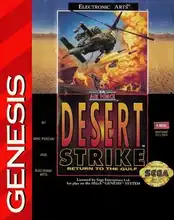The sound of dial-up connecting, the glow of a CRT monitor, and the thrill of a challenging PC game – those were the days, weren't they? While the early to mid-90s gave us the adrenaline rush of run-and-gun classics like Doom and Quake, another breed of first-person shooter was slowly taking shape. It was the dawn of the Tactical Shooter, a genre that demanded more than just quick reflexes; it required planning, patience, and often, a little bit of luck.
Unlike their arcadey cousins, tactical shooters grounded themselves in a semblance of reality. Ammo was scarce, taking a single bullet could be fatal, and charging in solo was a surefire way to meet a swift, pixelated end. For many retro PC gamers, these were the games that added a layer of depth and tension previously unseen in the FPS landscape.
What Exactly Made a Shooter "Tactical" Back Then?
Think about the difference between a Saturday morning cartoon and a gritty action movie. Classic FPS games were the cartoons – fast, frantic, and focused on maximum mayhem. Tactical shooters aimed for the action movie vibe.
Here's what set them apart in the retro era:
- Realism (or lack thereof): While not simulations, they strived for more believable combat. Weapons had recoil, bullets were deadly, and health didn't regenerate by finding a chicken dinner on the floor.
- Strategy & Planning: Before a mission, you often planned routes, chose loadouts, and assigned roles to AI teammates. It wasn't just about how you shot, but where and when.
- Teamwork: Many featured AI squadmates you could command. Success depended on coordinating movements, covering angles, and using specialized skills. Multiplayer wasn't always just deathmatch; objective-based modes requiring coordinated team effort were key.
- High Consequence: Failure often came quickly and punished mistakes severely. Reloading a save after a single stray shot ended your carefully planned assault was common.
The Rise of Realism: Early Pioneers
While the term "tactical shooter" wasn't always explicitly used from the get-go, certain games started leaning into these elements in the late 90s. Tom Clancy's Rainbow Six (1998) is arguably the most iconic early example that solidified the genre's identity.
- Rainbow Six (1998): This game blew minds with its pre-mission planning phase. You'd pore over blueprints, select team members, kit them out, and draw paths. The actual gameplay was tense, slow-paced, and unforgiving. A single headshot could take down you or an enemy instantly. It felt less like a game and more like a high-stakes operation.
Other games were also exploring similar territory:
- Delta Force (1998): Known for its vast, open environments thanks to its voxel engine. While perhaps less focused on intricate indoor planning than Rainbow Six, its emphasis on long-range combat, bullet drop, and the deadliness of individual shots pushed the envelope for outdoor tactical engagements.
- SWAT 3: Close Quarters Battle (1999): Shifting focus from military operations to police work, SWAT 3 excelled at simulating room-clearing procedures. Commanding your AI squad to stack up, breach, and clear rooms using proper tactics was incredibly satisfying and challenging.
These games weren't just about running and gunning; they were about thinking like a soldier or an officer, making split-second decisions based on training and planning.
More Than Just Point and Shoot
Playing these retro tactical shooters felt different because the mechanics supported the strategic focus:
- Limited Resources: Ammo wasn't infinite. You conserved bullets, used semi-auto fire, and made every shot count.
- Realistic Damage Models: Body part hit zones mattered. A shot to the leg would slow an enemy; a shot to the head was lights out.
- Complex Objectives: Missions often involved rescuing hostages, diffusing bombs, or capturing intel, not just reaching the end of a level.
- AI Teammates: Commanding your squad added a layer of complexity. Their survival and effectiveness were crucial to mission success.
This slower, more deliberate pace wasn't for everyone, especially those used to the breakneck speed of Doom. But for players who craved depth, realism, and the satisfaction of executing a perfectly planned assault, the early tactical shooters were a revelation.
Why Retro Tactical Shooters Still Matter
Beyond the rose-tinted glasses of nostalgia, these games hold up because they offered a distinct challenge. They forced players to slow down, observe, and strategize. They fostered a sense of accomplishment that came not just from twitch reflexes, but from smart decision-making.
Many modern tactical shooters owe a huge debt to these pioneers. Revisiting them today offers a fascinating look at the genre's foundations and provides a unique gaming experience that's less common in the mainstream now.
Finding and Playing These Classics Today
Good news for fellow retro enthusiasts! Many of these foundational tactical shooters are readily available on platforms like GOG (Good Old Games). They've often been updated to run on modern operating systems, saving you the headache of wrestling with compatibility issues. Steam also has re-releases or updated versions of some series.
Dive back in, plan your approach, and remember to check your corners. The golden age of tactical shooters is waiting.
FAQ
Q: What's the main difference between a classic FPS and a Tactical Shooter? A: Classic FPS games like Doom focus on fast-paced action, high enemy counts, and simple objectives. Tactical shooters prioritize realism, slower pacing, strategic planning, limited resources, and often squad-based gameplay.
Q: Are tactical shooters always first-person? A: While most are first-person (Tactical FPS), some notable examples like the early Ghost Recon games offered a third-person perspective option while retaining tactical gameplay elements.
Q: Are these old tactical shooters hard to run on modern PCs? A: Many classic tactical shooters from the late 90s and early 2000s have been made compatible with modern systems and are available on digital storefronts like GOG, which specializes in getting old games to run easily.
Q: What are some other classic tactical shooter series? A: Beyond Rainbow Six, Delta Force, and SWAT, look into series like Ghost Recon (early entries), Operation Flashpoint, and Hidden & Dangerous.

